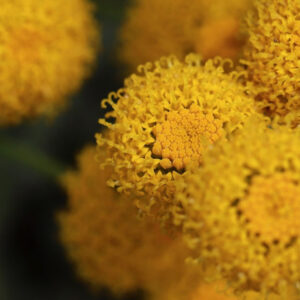Santolina

Santolina, a lesser-known but intriguing botanical, is beginning to find its place in the world of gin distillation. This aromatic herb, part of the Asteraceae family, is known for its silvery-green foliage and delicate yellow flowers. Often found in Mediterranean climates, Santolina has long been used for its medicinal and culinary properties, but its potential as a gin botanical is only now being fully explored.
When distilled, Santolina imparts a unique combination of herbal, woody, and slightly camphoraceous notes. It carries a mild bitterness, balanced by a fresh, almost pine-like aroma that pairs beautifully with juniper. The result is a complex and structured gin that offers depth without overpowering other botanicals. Its slightly savoury character makes it particularly well-suited for gins that aim to stand apart from traditional citrus-forward profiles.
Santolina works well alongside other Mediterranean-inspired botanicals, such as rosemary, thyme, and bay leaf, creating a sophisticated and herbaceous flavour profile. Its earthy and resinous qualities can also enhance the depth of more floral and citrusy gins, adding a layer of refinement and balance.
Beyond its flavour, Santolina is a sustainable and resilient plant, thriving in dry, rocky soils with minimal intervention. As sustainability becomes increasingly important in the spirits industry, distillers are looking towards botanicals like Santolina that require fewer resources to cultivate.
With gin lovers continually seeking new and exciting flavour experiences, Santolina is poised to become a distinctive addition to modern gin recipes, offering a refined, herbaceous twist to the classic juniper spirit.


